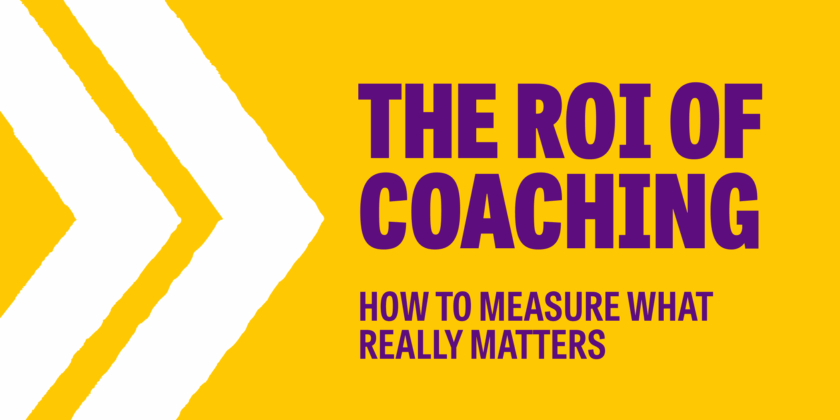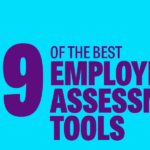“What gets measured gets managed.” – Peter Drucker
But when it comes to coaching, what exactly should we be measuring?
In HR and Talent circles, we often talk about coaching like it’s a magic bullet. A powerful intervention. A career unlocker. And in many ways, it is. Coaching has become a non-negotiable for high-performing organisations. It’s how we support transitions, drive behavioural change, manage change, unlock career potential, and equip our leaders to navigate complexity.
But let’s be honest. When budgets tighten, coaching is often one of the first things that gets scrutinised.
And that’s where the challenge lies: not in whether coaching works, but in whether we can prove that it does.
Why ROI still matters in Coaching
The conversation about the ROI of coaching isn’t about stripping away the human magic. It’s about ensuring we’re making smart, strategic investments. That the time, energy, and budget we pour into workplace coaching impacts the business in tangible ways.
At Let’s Talk Talent, we work with HR leaders every day who are passionate about the development of their people, but also have to justify that investment in the boardroom. And here’s what we’ve learned:
Measuring the ROI of coaching isn’t about metrics for metrics’ sake. It’s about connecting personal growth to organisational outcomes.
How to measure Coaching outcomes and impact
There are three levels to measuring coaching effectiveness, and the most successful organisations track all three:
1. Individual Growth (Coaching outcomes)
This is the most obvious, and most immediate, area of coaching ROI. It’s about:
- Increased self-awareness and emotional intelligence
- Improved confidence and clarity
- Sharper decision-making
- Stronger interpersonal skills and leadership presence
How to measure it: Pre- and post-coaching self-assessments, reflective journaling, 360-degree feedback, EQ assessments.
Why it matters: These personal shifts ripple into performance. More confident, self-aware leaders drive better results.
2. Team & Culture Impact
Coaching never stays with just the individual. When done well, it shifts how teams collaborate, communicate, and challenge each other.
- Stronger cross-functional relationships
- Greater accountability and ownership
- Healthier team dynamics and increased psychological safety
How to measure it: Team engagement surveys, manager feedback, peer reviews, observation from coaches or HR.
Why it matters: When leaders shift, teams follow. Coaching helps unlock high-performance culture.
3. Business Outcomes (The Real ROI of Coaching)
This is where many HR leaders feel the pressure: proving coaching’s impact on the bottom line.
Here’s the thing: coaching does affect performance. But you have to be clear about what you’re tracking.
- Faster onboarding for new leaders
- Better succession readiness
- Higher promotion rates and reduced attrition among key talent
- Increased productivity or project delivery speed
How to measure it: Internal promotion rates, time-to-value for new leaders, retention of HiPos, performance reviews over time.
Why it matters: Coaching is not a ‘nice-to-have’ – it’s a strategic performance accelerator.
According to the ICF, 86% of companies that could calculate their return on investment said that they at least made back their initial investment. 19% indicated an ROI of 50x the investment. 28% saw an ROI of 10-49x the investment. The median ROI is 7x the investment – ICF Global Coaching Study.
But numbers alone aren’t the full story. Measuring the ROI of coaching is about clarity, not just calculation. It’s about understanding the ripple effect – from individual mindset shifts to business-wide transformation. When you define success clearly and track it intentionally, coaching becomes a catalyst for culture, capability, and commercial growth.
Why Measuring the ROI of Coaching Matters More Than Ever
It starts with intention. The ROI of coaching becomes visible when you embed it into your talent strategy, not just as an isolated initiative, but as a culture shift.
Here’s how:
Align coaching goals with business priorities
Start every coaching engagement with a triad conversation between the coach, coachee, and line manager. Agree on what success looks like, not just personally, but professionally and organisationally.
Build a mixed-method measurement approach
Use both quantitative (surveys, assessments, retention data) and qualitative (stories, observations, reflections) insights. It’s not either/ or. The combination is what creates meaning.
Track progress beyond the sessions
Coaching isn’t over when the contract ends. Follow up 3–6 months later. Has behaviour stuck? Has performance improved? Is the leader applying what they learned?
Tell a story, not just a scorecard
Data matters, but stories make it stick. Combine metrics with case studies, testimonials, and visible behavioural shifts to build a compelling narrative.
Our Coaching Philosophy at Let’s Talk Talent
At Let’s Talk Talent, we believe coaching should feel personal, powerful, and purpose-driven. It’s not about ticking boxes. It’s about unlocking real human potential, whether that’s through Coaching on Demand for just-in-time support, targeted leadership development, or assessment-led programmes that give people clarity on who they are and where they want to go.
Our approach is simple: coaching should always link back to performance, potential, and purpose. We work with organisations to make coaching part of the culture, not just a standalone intervention.
Because coaching isn’t just about improving performance, it’s about building the kind of leaders your business needs next.
We use a blended, data-informed approach grounded in self-awareness, accountability, and organisational impact, aligning with your strategy, not sitting alongside it.
Explore more about our approach here: Coaching & Assessment Services
Why the ROI of Coaching Goes Beyond Numbers
The challenge isn’t just measuring coaching effectiveness. It’s choosing to measure the right things. Not just cost per head or number of sessions, but how coaching contributes to:
- Retention of high-potential talent
- Reduced burnout and better wellbeing
- More inclusive, emotionally intelligent leadership
Because in the end, coaching isn’t just about helping individuals succeed. It’s about building leaders who create success for everyone else around them.
It’s about career conversations that inspire confidence. It’s about building team trust and resilience. It’s about linking individual growth with long-term organisational health.
So HR leaders, don’t shy away from the ROI conversation.
Lead it.
Anchor it in impact.
Ready to go deeper?
Explore our Coaching & Assessment Services and see how we help organisations measure what matters most.
Or let’s talk about how to embed coaching into your wider learning and development strategy.
FAQ’s
What is the ROI of coaching in the workplace?
Coaching delivers measurable results at the individual, team, and organisational level. From improved self-awareness and leadership skills to better retention and faster succession, coaching proves its ROI through both qualitative shifts and hard business metrics.
How can HR measure the effectiveness of coaching?
HR can measure coaching effectiveness using pre/ post self-assessments, 360 feedback, team engagement data, and business metrics like internal promotions and retention rates.
Why is coaching important for business growth?
Because coaching develops leaders who can navigate change, drive strategy, and retain top talent – essential for business resilience and performance.



